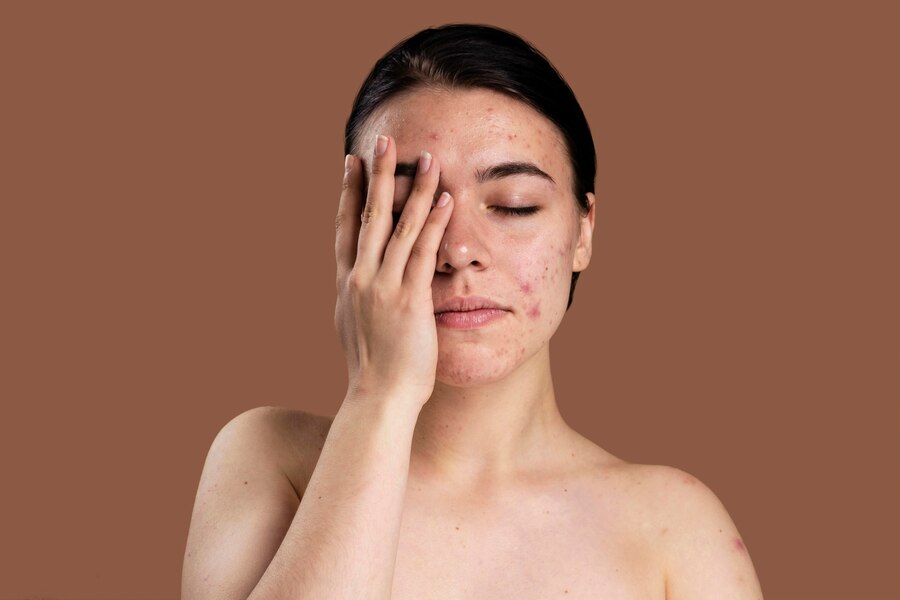
Commonly Treated Conditions
Moles
Moles (also called “nevi”) are common and appear are round or oval spots with varying color from orange to black. While some people have moles at birth, most will develop them within the first thirty years of life. Dermatologists routinely check moles during skin checks, but should you notice any changing or unusual moles, it is essential to contact our office for an exam to rule out skin cancer.
Acne
There are multiple subtypes of acne, all of which have differing treatments. Inflammatory acne is characterized by red, painful bumps, while comedonal acne presents as whiteheads and blackheads. Hormonal acne may be present if acne appears around the timing of menstrual cycles. While commonly associated with adolescence, acne can arise at any stage of life. Treatment typically involves a blend of topical and oral therapies.
Psoriasis
Psoriasis is a chronic autoimmune condition characterized by the rapid buildup of skin cells, leading to thick, red patches covered with silvery scales. It often affects areas such as the scalp, elbows, knees, and lower back, though it can appear anywhere on the body, including the groin. Psoriasis is not contagious and can be triggered by stress, infections, and certain medications. Management typically involves a combination of topical treatments, oral medications, and biologics tailored to the severity and extent of the condition.
Eczema
Eczema, also known as atopic dermatitis, is a chronic skin condition characterized by inflammation, redness, itching, and sometimes the formation of dry, scaly patches. It often affects infants and children, but can persist into adulthood or develop later in life. Eczema is believed to result from a combination of genetic and environmental factors, including allergens, irritants, and immune system dysregulation. While there is no cure for eczema, various treatments such as moisturizers, topical corticosteroids, and systemic treatments can help manage symptoms and alleviate discomfort.
Warts
Warts are caused by the human papillomavirus (HPV) infecting the top layer of the skin. They typically appear as small, rough bumps and can vary in size and shape. While warts are harmless and eventually disappear over time, they can be bothersome or cosmetically undesirable. The most common treatment options include over-the-counter remedies and liquid nitrogen cryotherapy (freezing). Even with treatment, warts may recur, especially in individuals with weakened immune systems.
Rosacea
Rosacea is a chronic skin condition that primarily affects the face. It can present with redness, flushing, visible blood vessels, pus-filled bumps resembling acne, or thickening of the skin (i.e. rhinophyma). Common environmental triggers include sunlight, spicy foods, and alcohol. There are various treatments for rosacea, including topical medications, oral antibiotics, and laser therapy.
Hidradenitis Suppurativa (HS)
Hidradenitis suppurativa (HS) is a chronic skin condition that is characterized by painful, recurrent nodules or draining abscesses, typically in areas where skin rubs together, such as the armpits, groin, and buttocks. These lesions can rupture and lead to the formation of tunnels beneath the skin, known as sinus tracts, which often produce a foul-smelling discharge. The exact cause of HS is not fully understood, although inflammation of hair follicles and sweat glands is a suspected etiology. Treatment usually involves a combination of topical medications, oral medications (such as antibiotics), and biologics, along with surgical interventions in severe cases. Management strategies aim to control symptoms, prevent flare-ups, and improve overall well-being for individuals living with HS.
Other Common Conditions:
- Actinic Keratoses (“Pre-cancers”)
- Allergic and Irritant Contact Dermatitis
- Cold Sores
- Fungal Infections
- Hives (Urticaria)
- Seborrheic dermatitis
- Vitiligo
